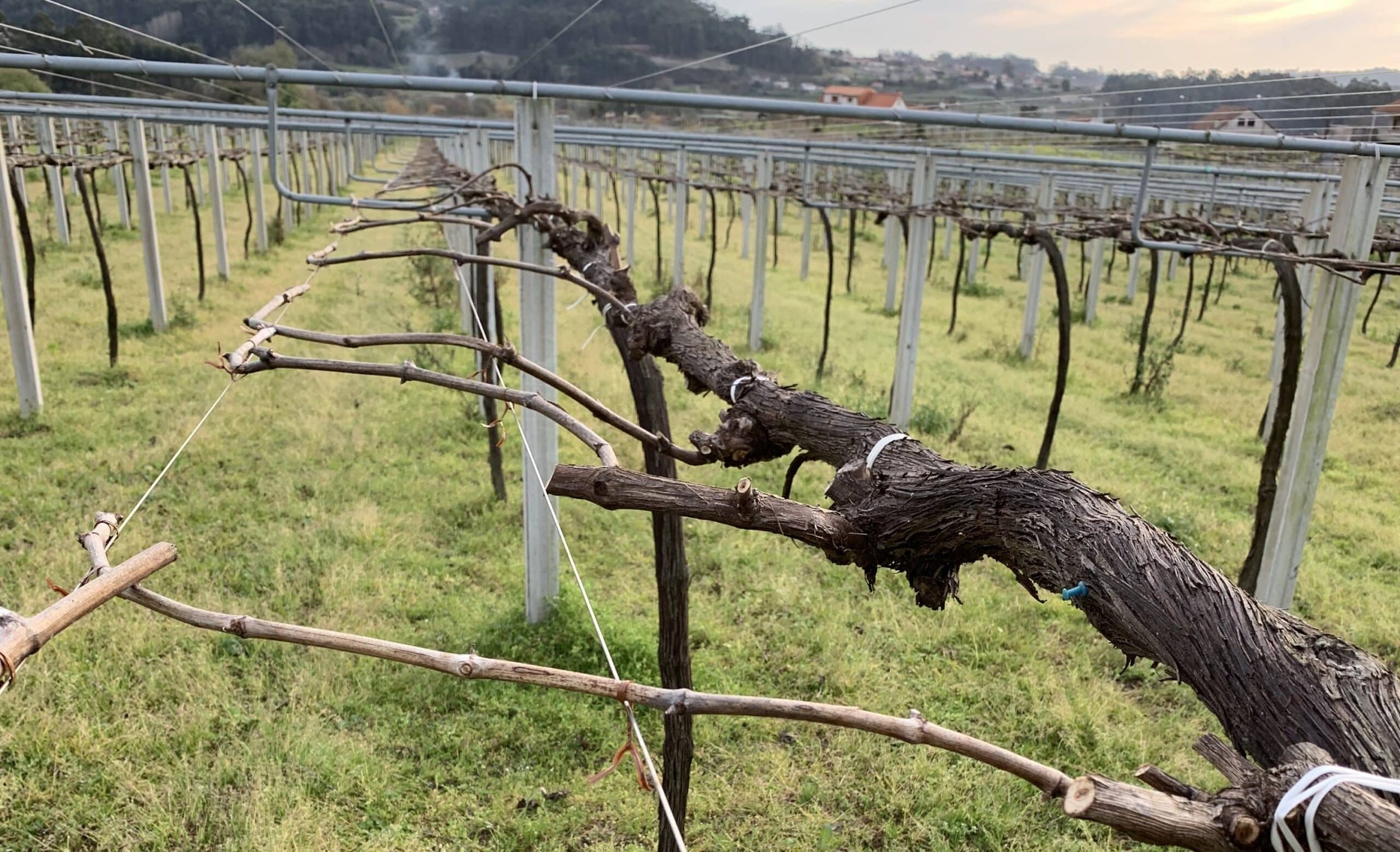Vine Pruning in Galicia
Galicia has a few different types of vine training and pruning systems.
The first is en vaso or goblet pruning. No canes are left in this system, but rather short pieces of wood, with one or two buds. In the Galician language there are many designations for this kind of spur: cotón, fiador, guardia, virote, talón, podo… Every year two fruiting canes will sprout from each spur, and become branches. When the time comes for winter pruning, the shoot closest to the permanent wood will be pruned down to two buds, making a new coton (spur). In Galicia, you normally see this type of pruning in Ribeira Sacra, Monterrei, and Valdeorras. In Valdeorras, growers sometimes leave longer canes with three or four buds called palletas when the vine is vigorous enough.
As mechanical means of working the vines became more available, people began training vines in espaldera, or trellis systems. Here, the most common pruning techniques you’ll see are Guyot and Royat.
In areas like Ribeiro and Ribeira Sacra, growers practice vara arqueada, bending the cane into an arch and tying it to a stake or the wire of a trellis guide. The arched canes compensate for the vine’s natural acrotony or apical dominance—the tendency to concentrate growth in the furthest part of the shoot—and distribute vigor throughout the cane, encouraging the middle buds on the canes to produce more robust shoots. The cane is arched close to the permanent wood, leaving between 5 and 10 buds. The traditional way is to arch the canes and tie them with wicker, known as vimbio in Galician. In Ribeiro, the process is called rodriga after the rodrigóns, or stakes, that the canes are tied to.
Then we’re left with the Guyot system, called poda mixta in some areas. Here, the grower leaves a spur with two buds, followed by a cane. Two vines will emerge from the buds of the spur, which will transform into branches after they have matured at the end of summer.
In the following winter pruning, the cane located closer to the old wood will be pruned to two buds.
In Rías Baixas, the most famous vine training system is the pergola method, known as emparrado. A series of posts called pastas support a wire structure on which the shoots grow. Tradition dictates keeping an “aisle” between rows of vines to encourage airflow and ventilation, but some growers choose to plant large areas of contiguous vines.
On top of each post is a bar that supports 5 or 6 wires stretching horizontally across to another bar on the opposite post. The bar can be made of metal, concrete, or wood, depending on the style of the parras, and the wire structure is usually made of stainless steel and sits around a height of 1.8 meters, with around 25-30 cm between each wire. Nowadays, larger plantations of grapes in Rías Baixas are trained in espaldera.



